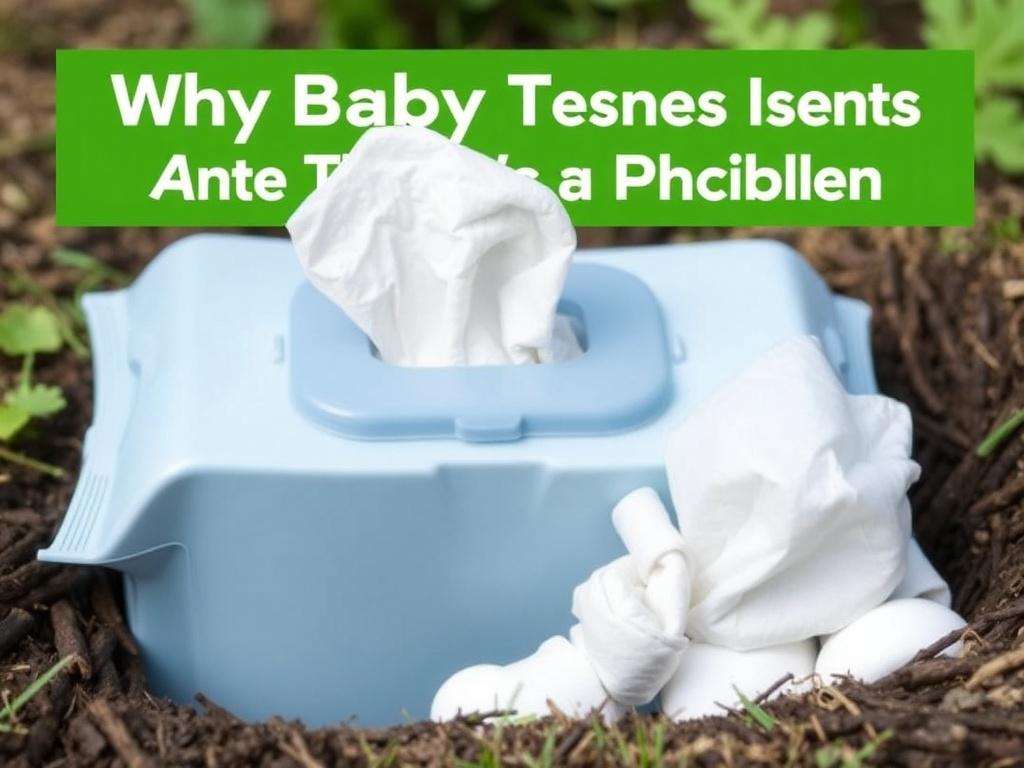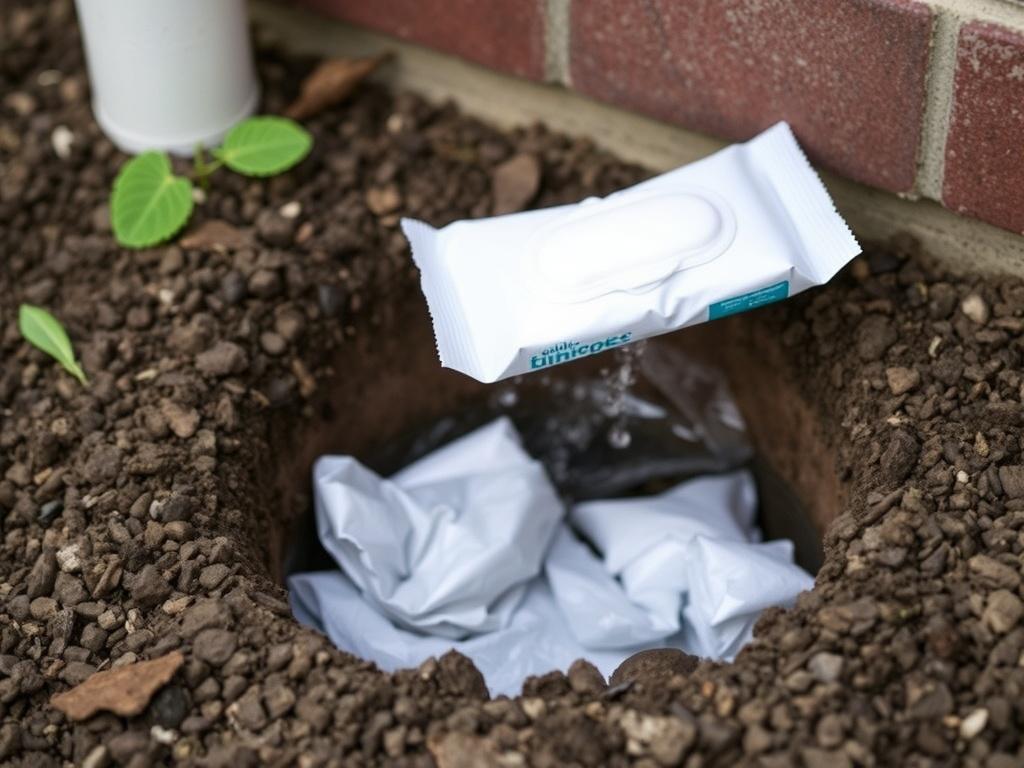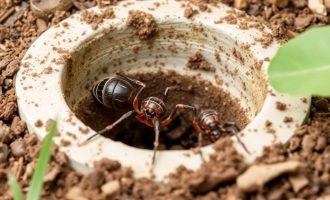Septic tanks are critical components of many homes, especially in rural and suburban areas that don’t have access to centralized sewer systems. These underground systems are designed to treat and manage household wastewater, playing an important role in protecting the environment and keeping our homes sanitary. However, the health of a septic system depends largely on what is and isn’t flushed down the drain. One surprisingly common but significant issue arises from the disposal of baby wipes in septic tanks. Although baby wipes seem harmless and convenient, they can cause major problems for septic systems. In this article, we’ll explore why baby wipes pose risks to septic tanks, the science behind septic tank function, and what homeowners can do to avoid costly repairs or system failures.
- Understanding How Septic Tanks Work
- Key Components and Their Roles
- Why Baby Wipes Are a Problem for Septic Tanks
- Material Composition Makes All the Difference
- Obstruction of Pipes and Tank Components
- Disruption of Bacterial Activity
- Environmental Risks
- Common Misconceptions About Flushing Baby Wipes
- Marketing vs. Reality
- Why Toilet Paper Is Safer
- Alternatives to Baby Wipes in Septic Systems
- Signs Your Septic Tank Is Struggling Because of Baby Wipes
- Routine Septic Tank Maintenance and Inspection
- How to Protect Your Septic Tank and Avoid Baby Wipe Problems
- Simple Do’s and Don’ts for Septic Tank Care
- Educate Your Household
- Proper Disposal of Baby Wipes
- Choose Septic-Safe Alternatives
- Environmental and Economic Impacts of Ignoring the Problem
- Environmental Contamination Risks
- Costly Repairs and Replacements
- Summary Table: Baby Wipes vs. Toilet Paper in Septic Systems
- Conclusion
Understanding How Septic Tanks Work
Before diving into why baby wipes cause trouble, it’s important to understand how septic tanks actually operate. A septic tank receives wastewater from your home’s plumbing system, including toilets, showers, sinks, and appliances. Once inside the tank, solids settle at the bottom to form sludge, while oils and lighter waste materials float to the surface as scum. In between is relatively clear liquid, known as effluent, which flows out into a drain field or leach field, where it undergoes further natural filtration as it percolates through soil.
This process relies heavily on the presence of beneficial bacteria that break down organic matter inside the tank. As a result, septic tanks can effectively treat typical household wastewater, but only when the system operates as intended.
Key Components and Their Roles
| Component | Description | Function |
|---|---|---|
| Inlet Pipe | Pipe that channels wastewater from the house into the septic tank. | Directs sewage into the system for treatment. |
| Septic Tank | Large underground tank holding wastewater. | Separates solids, scum, and liquid, and provides residence time for bacteria to break down waste. |
| Outlet Pipe | Pipe that allows treated effluent to exit the tank. | Moves partially treated water into the drain field. |
| Drain Field / Leach Field | Series of perforated pipes or trenches buried in the soil. | Filters and disperses effluent safely into the environment. |
The entire septic system is designed to work with typical biodegradable household waste materials. When other non-biodegradable items enter the system, trouble often follows.
Why Baby Wipes Are a Problem for Septic Tanks

At first glance, baby wipes appear similar to toilet paper, and many people assume they can be flushed safely. Unfortunately, baby wipes are very different from toilet paper in composition and behavior inside a septic system.
Material Composition Makes All the Difference
Most baby wipes are made from synthetic fibers like polyester, polypropylene, or rayon. These materials are chosen for their durability, softness, and ability to stay intact even when wet. Unlike toilet paper, which is designed to break down quickly in water, baby wipes do not disintegrate easily. They tend to remain intact or only partially break apart, creating clumps and blockages inside the plumbing and septic tank.
Obstruction of Pipes and Tank Components
Because baby wipes don’t dissolve, they can catch on baffles inside the septic tank or accumulate in the pipes leading to the drain field. This buildup restricts flow and can cause backups in the plumbing itself or in the septic tank. Over time, these blockages force the system to work harder, accelerating wear and increasing the likelihood of a costly failure.
Disruption of Bacterial Activity
Septic tanks rely on bacteria to digest organic waste and reduce sludge levels. Baby wipes, along with the chemicals and fragrances often found in them, can inhibit this vital bacterial activity. When bacteria are damaged or killed off, waste breakdown slows down, making the system less efficient and causing sludge to accumulate faster than normal.
Environmental Risks
When baby wipes clog septic tanks and drain fields, untreated or partially treated sewage can back up into the home or leak into surrounding soil and water sources. This contamination poses risks to human health and local ecosystems. Additionally, fixing such damage often requires invasive repairs or even complete system replacement.
Common Misconceptions About Flushing Baby Wipes
Many brands label their wipes as “flushable,” but this term is often misleading. The “flushable” label usually means the wipes can be flushed down the toilet, but it does not guarantee they will break down properly or safely in septic systems.
Marketing vs. Reality
Manufacturers may use “flushable” to signify an attempt to meet minimal plumbing standards in municipal sewer systems—where higher volumes of water and advanced treatment plants exist—not individual septic tanks. In septic systems, the conditions are very different and less forgiving.
Why Toilet Paper Is Safer
Toilet paper is specifically engineered to dissolve quickly in water and break down through bacterial action. This means that once flushed, toilet paper disintegrates before reaching the septic tank or shortly after, preventing blockages and allowing the bacteria in the tank to process the waste easily.
Alternatives to Baby Wipes in Septic Systems
If you want to keep your septic tank healthy, it’s important to find alternatives to baby wipes that do not cause harm. Many families choose to use plain water and reusable cloths for cleaning, or flush only toilet paper and dispose of wipes safely in the trash.
Signs Your Septic Tank Is Struggling Because of Baby Wipes
Recognizing early symptoms of septic tank issues can save you from expensive repairs. If baby wipes have caused blockages or damage, you may notice some of the following:
- Slow Drains: Sinks, tubs, or toilets draining slower than normal may indicate a clog.
- Backups: Wastewater backing up into your home or yard is a serious warning.
- Odors: Foul smells near the septic tank or drain field can indicate system overload or failure.
- Wet Areas: Spongy or wet ground near the drain field suggests effluent is not being absorbed properly.
- Unusual Noises: Gurgling sounds in plumbing may signal blockages.
Noticing these problems early gives you the chance to call a professional septic service to inspect and correct the issue before it worsens.
Routine Septic Tank Maintenance and Inspection
Regular septic tank pumping—every 3 to 5 years depending on use—helps remove sludge and scum buildup and keeps the system functioning well. During pumping, professionals can also look for damage caused by non-biodegradable items like baby wipes.
How to Protect Your Septic Tank and Avoid Baby Wipe Problems
Preventing baby wipes from damaging your septic system involves a combination of education, behavior changes, and proper waste management.
Simple Do’s and Don’ts for Septic Tank Care
| Do’s | Don’ts |
|---|---|
| Flush only human waste and toilet paper. | Flush baby wipes, even those labeled flushable. |
| Dispose of all wipes in the trash. | Pour harsh chemicals or bleach into drains that kill beneficial bacteria. |
| Have your septic system inspected and pumped regularly. | Ignore signs of septic problems like slow drains or odors. |
| Use biodegradable household cleaners that won’t harm bacteria. | Overload your system with excessive water usage. |
Educate Your Household
Make sure everyone, including guests and children, understands the importance of septic-safe practices. Post reminders near toilets and sinks. Explain why baby wipes should go in the trash instead of flushed.
Proper Disposal of Baby Wipes
Providing easy-to-access trash bins near bathrooms is a simple, effective way to discourage flushing wipes. Consider using lidded bins to contain odors and keep the bathroom tidy.
Choose Septic-Safe Alternatives
If you prefer wipes for cleaning, opt for products designed specifically to break down quickly and safely, or switch to using washcloths that can be laundered and reused.
Environmental and Economic Impacts of Ignoring the Problem

Ignoring the impact of baby wipes on septic tanks doesn’t just threaten your home; it can have wider consequences.
Environmental Contamination Risks
Leaking septic tanks caused by blockages harm the soil and contaminate groundwater. This can lead to pollution of streams, lakes, and drinking water sources, harming wildlife and public health.
Costly Repairs and Replacements
Fixing a septic system damaged by baby wipes is expensive. It often involves:
- Professional pumping and cleaning.
- Clearing pipe blockages.
- Repairing or replacing damaged components.
- Installing entirely new drain fields or tanks in severe cases.
These costs far exceed the simple habit of disposing of baby wipes in the trash.
Summary Table: Baby Wipes vs. Toilet Paper in Septic Systems

| Feature | Baby Wipes | Toilet Paper |
|---|---|---|
| Material | Synthetic fibers (polyester, polypropylene, etc.) | Biodegradable paper pulp |
| Breakdown in Water | Very slow / minimal | Rapid |
| Flushability | Technically flushable but harmful to septic tanks | Safe for septic tanks |
| Effect on Bacteria | Harms beneficial bacteria | Supports bacterial digestion |
| Potential for Clogs | High | Low |
| Recommended Disposal | Trash only | Flush |
Conclusion
Septic tank health depends heavily on careful waste disposal, and baby wipes represent a hidden but significant threat to these systems. Despite many claims of flushability, baby wipes are made of materials that do not break down easily, leading to clogs, bacterial imbalances, and system failures that can be costly and environmentally damaging. By understanding how septic tanks work and the risks posed by flushing baby wipes, homeowners can take simple yet effective steps to protect their septic systems. Avoiding flushing baby wipes, educating family members, maintaining the system, and opting for septic-safe alternatives ensures that your septic tank continues to operate smoothly and efficiently while protecting your home and the surrounding environment. Remember: when it comes to septic tanks, flushing baby wipes is a problem you don’t need!
Помогла вам статья?






